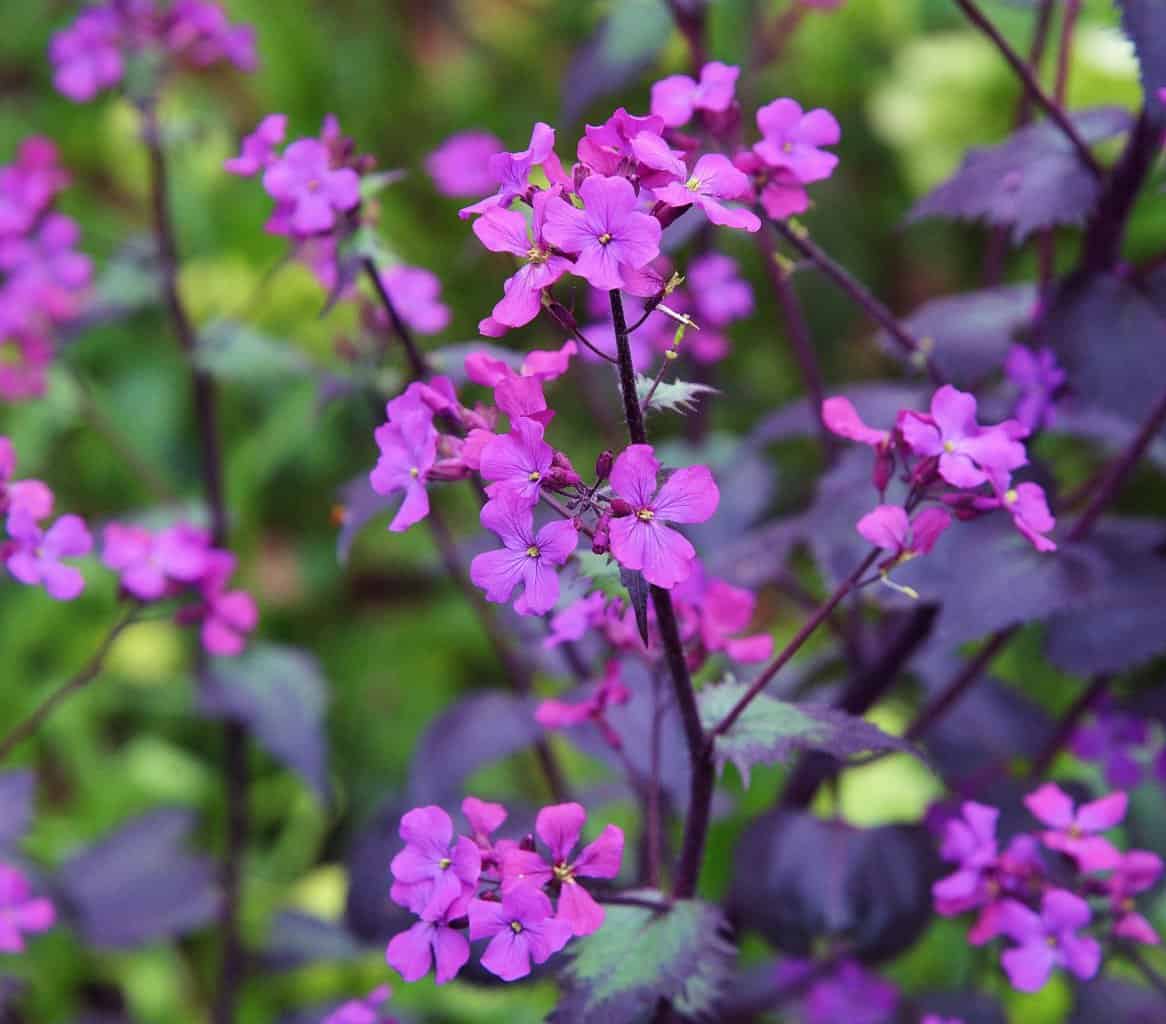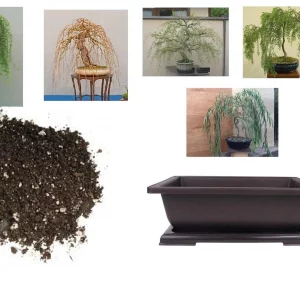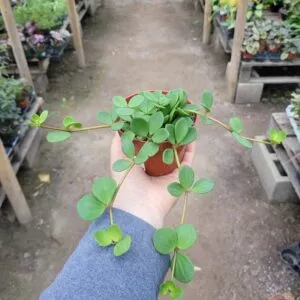No products in the cart.
Table of Contents
Nothing stands out in the garden like the Honesty plant, also known as the silver dollar plant for a super chic succulent. Whether you have a green thumb or not, it is easy to grow Honesty flowers in your landscaping.
Not only do they bring color to the garden, but they look fabulous in dried flower arrangements.
More About The Honesty Plant
In the plant kingdom, you can find two Honesty flowers, a biennial known as the Lunaria annua belonging to the Brassicaceae family. The plant goes by different common names money plant, silver dollar plant, moonwort, and Honesty.
Then you have the perennial Honesty known as Lunaria rediviva. The honesty plants grow three feet tall and two feet wide with rainbow leaves. The foliage is papery seed pods with basal rosette leaves in the first year with purple flowers or the seedpods emerging the following year.
The blooms develop fragrant flowers from mid-late spring to early summer in the 2nd year. These ornamental plants display deep purple to white flowers. The blossoms vary in color and depend on your variety.
Some even have purple-tinted flowers, and once it fades in early summer, they are replaced with translucent seed pods looking like coins. The seeds start green, turning to golden brown when dry. The foliage consists of oval to heart-shaped leaves with serrated edges and pointed tips.
Interesting Facts About These Flowering Plants
Lunaria plants originate from central and southern Europe to Asia. People with a passion for witchcraft consider it a protective plant using the flat ripe fruit pods in prosperity and wealth spells.
The purple flowers attract pollinators, and the blooms are edible and used in different salad recipes. Even the peeled root you can eat while the seeds have a mustard-like taste. This is because so many people use the seeds as a mustard substitute.
The plant is safe for humans and pets and can grow anywhere.
Another interesting fact is that the flowering plant received an award of garden merit from the Royal Horticultural Society.
Money Plant Care

To plant Honesty, it works great as a spring woodland border; you need not fuss about them. But the money plant is not a perennial variety except for the Lunaria redivia. They thrive and are self-seeding, making them invasive as they multiply.
Still, controlling your collection by controlling them makes for magnificent plants in shade gardens. As the flowers and pods dry, you can add them to floral arrangements. Alternatively, you can keep them contained and growing as ground cover.
Planting Honesty Plants
When planting Lunaria annua, it helps to remember it has long taproots and does not respond well to transplanting. Hence, it is best to grow the Lunaria from seeds. You can grow Honesty from seed or young plants.
The seeds you can grow in a seed tray in early summer to transplant to larger pots and then to final growing positions in your cutting gardens.
Lighting Needs

The Lunaria makes for a beautiful addition to the garden or living space with the right growing conditions. Of course, your plant will do well with full sun exposure to partial sun. Still, in hot summer climates, you can provide them with some shade in the afternoon.
The Lunaria plant needs about eight hours of sunlight to grow those strong stems with a robust root to flower. Yet, while it is very tolerant, protecting them from direct sun when very hot is wise.
Recommended Soil
The best soil to grow Lunaria annua outdoors is coarse sand that is deep to accommodate the long taproots. Also, choose a sunny spot with well-drained soil filled with organic matter in your cutting garden.
Water Regularly
The important thing is to provide your Honesty flower with moist but well-drained soil in gardens to prevent wet feet that can lead to root rot. Your plant needs a lot of moisture to grow healthy. With constant damp soil, year-round, they grow well in most gardens.
The frequency of watering depends on the climate. From spring to summer, you may find you need to water more often than in winter. Yet, it also depends on the rainfall.
Temperature and Humidity

As with too much direct sunlight and preventing overwatering, Lunaria can tolerate lower temperatures but prefer warmth between 60° to 70° Fahrenheit to become established as new plants in a garden. Once established, the plant can grow at different temperatures and humidity levels.
Fertilizing Lunaria
You can feed your plant in early spring with an organic or slow-release fertilizer. It will help with the blooming.
Pruning, Harvesting, and Storing
When wanting to control your Lunaria seedlings from self-seeding, it helps to prune them a bit to prevent growth. You can collect seeds to use in wreaths and dried arrangements. You can harvest your plants in late summer once the seed pods develop before dropping down any seeds.
Another helpful tip when you want to harvest is to cut your Honesty growing down at the base and take it indoors. You can tie the cuttings in bundles with twine to suspend them upside-down in a low-humidity space. The seed pods dry in two weeks, and you will notice the brown husks falling off.
How to Propagate Honesty Flowers
When you honestly plant, the big question is to ask how to plant Lunaria seeds as it is the only way to propagate the plant. The reason is that the roots are long and very delicate.
You can sow seeds outdoors during spring and cover them with soil and water. Placing your seeds about 18 inches apart is important, and germination takes two weeks.
Or you can start seedlings in a seed tray.
Honesty Varieties
You can find different species when you want to grow Honesty flowers, and they make for exceptional companion plants grown in full sun to partial shade.
Chedglow

The Honesty plants have chocolate leaves with lilac flowers, attracting the orange tip butterfly in the blooming season.
Lunaria annua var albiflora

The plant received the Royal Horticultural Society AGM award for those gorgeous white flowers.
Lunaria rediviva

It is a perennial Honesty with pale lilac fragrant flowers and good seedheads.
Common Pests and Diseases
While the Honesty flowers are low maintenance, you still have pest issues like aphids you can treat with neem oil or insecticidal soap.
Another problem is gray to black leaves resulting from septoria leaf spot, a fungal disease. Again, we recommend removing infected parts to see if the condition passes.
Wilting or yellow leaves result from club roots, and infected parts need removing.
Frequently Asked Questions
The annual Honesty you find listed as invasive in some USA states as it threatens other species growing in the garden.
You can start the Honesty plant indoors seven weeks before the last frost. Then, once more grown, you can transplant the young plants into larger pots to replant in the garden later. But the plant has delicate roots, and it can grow huge.
When planted in spring, it grows fast, and you will see seedlings in 14 days.
You can find the seed available at garden centers to do direct sow with spring bulbs in mid-spring. But you need not look far as Plantly has the Honesty Lunaria varieties available for you.
Whether you want to buy, sell or simply reach out to other plant enthusiasts, Plantly is the right place to be!
In stock In stock In stock In stock
Free Shipping
$49.99
Sold By:
CZ Grain
Willow Bonsai Kit – Soil and Pot Included – You pick the type
Only 996 available and it’s in 1 people’s basket Rated 4.60 out of 5 based on 156 customer ratings00
Sold By:
CZ Grain
$25.30
Sold By:
Carlo's Plant Farm
Blue Cone Arborvitae | Carlo`s Plant Farm
Rated 5.00 out of 5 based on 22 customer ratings00
Sold By:
Carlo's Plant Farm
Free Shipping
$32.96 – $54.96
Sold By:
CZ Grain
Bur Oak Tree Seedlings to Plant
Rated 4.60 out of 5 based on 156 customer ratings00
Sold By:
CZ Grain
$6.00 – $12.00
Sold By:
Plants by Stinky Boo
Peperomia Hope
Only 20 available and it’s in 2 people’s basket Rated 5.00 out of 5 based on 2 customer ratings00
Sold By:
Plants by Stinky Boo






